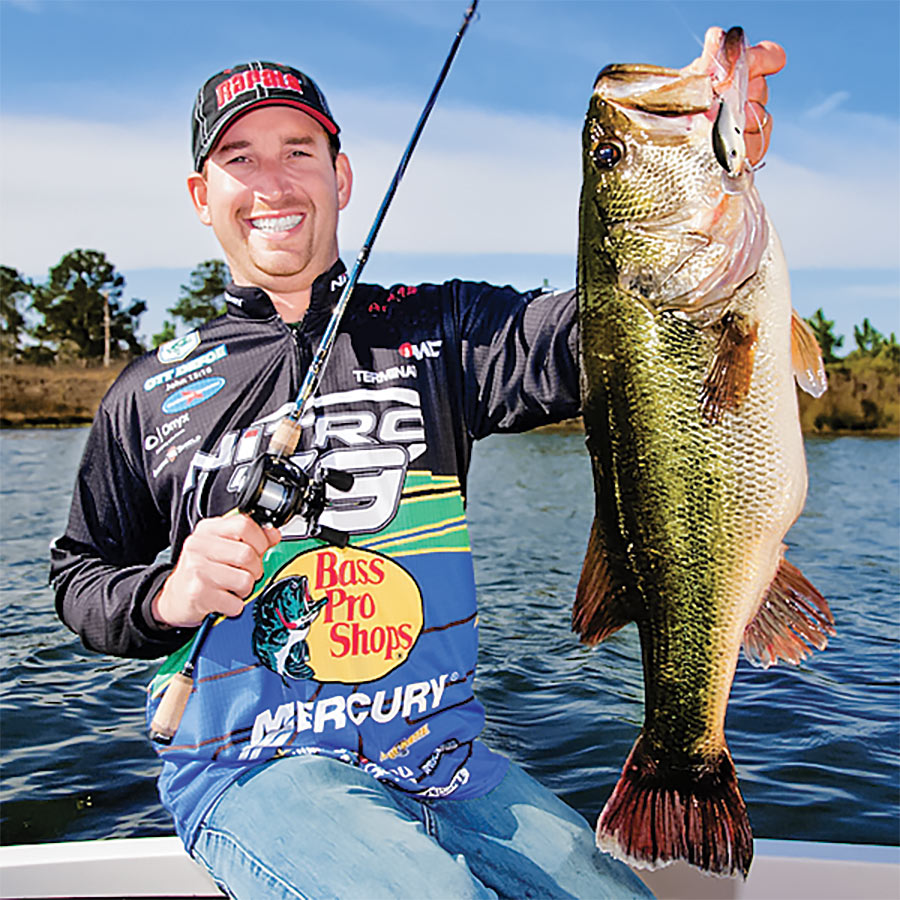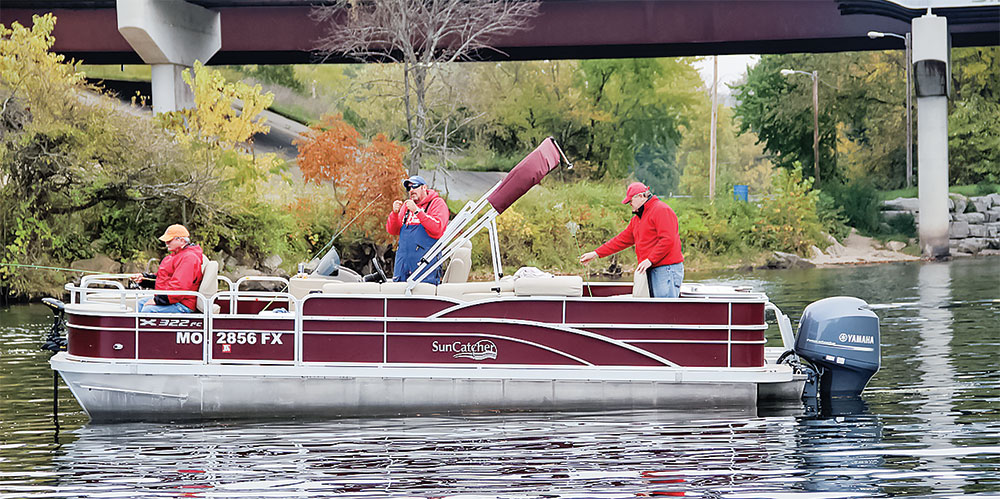


f you think your local largemouth bass fishing season is over just because the leaves are off the trees, think again. Once water temperatures drop below 52 degrees, you can have a ball—and often have the water to yourself—by jerking deep-running crankbaits across and over shallow shelves near steep breaks into deeper water from the bow of your deck or pontoon boat.
“Those fish were back in really flat stuff feeding throughout the fall, but in early winter they’ll head to stuff that’s going to be real steep,” says Ott DeFoe, a five-time Bassmaster tournament champion who uses deep-running crankbaits such as the Shadow Rap Deep, which will run up to 9 feet deep when cast on 10-pound-test mono.
As in most reservoirs, transition areas in the reservoirs DeFoe fishes this time of year appear on a contour map as relatively flat “shelves” extending from near the bank out to a break-line where the bottom begins sloping sharply into deeper water. Depths on the shelf might vary from 3 to 10 feet, he says, but water on the other side of the break will be significantly deeper.
“You’ve got some taper where those fish can pull up and feed, but then it comes off from that and breaks off deep pretty quick,” explains DeFoe. “A half a cast off of the bank or so, you may only be in 5 feet of water, but the next half a cast it goes from 5 to 20 feet pretty quick. Or even deeper than that.”
In such conditions, DeFoe casts as far as possible, and at an angle perpendicular to—rather than parallel with—the bank and breakline.
“You’re never exactly sure what depth they’re going to be at when you pull up to a spot,” DeFoe explains. “So I make as long a cast as I can and cover every depth range back to the boat—versus making a parallel cast, where my bait would be in mostly the same depth throughout my retrieve. Most times, I’m sitting deep and throwing as shallow as I can reach.”
He reminds anglers to actively fish the crankbait all the way back to the boat—not allowing your mind to wander towards the end of your retrieve—because bites this time of year can come both far and near.
“You’re going to catch some right at the beginning of the cast, like two jerks in; some half-way back to the boat; and some practically under the boat,” DeFoe says.

Bass anglers generally start testing early-winter patterns when water temps fall to 54 to 52 degrees, according to the bass professional. “From there, I consider it to be more winter than late-fall around here,” he says of his home Tennessee waters. “And when you fall below 50, I consider that fully into the winter time-frame.” Water temps in DeFoe’s region reach winter conditions around the first of December he says, but notes that timelines will vary throughout the country.
Another variable, region to region, is water clarity, which affects both the depth at which early-winter bass will hold, and the amount of action required to get bit.
“The water clarity in our lakes is not so that we’re catching them 10 feet down in 20 or 30 feet of water,” DeFoe explains. “Fish that are catchable here this time of year are within no more than 5 feet off the bottom.”
DeFoe keeps a close eye on his sonar unit, noting if the bass he marks are belly to bottom, or suspended just above the bottom. He adjusts his boat position and retrieves accordingly, to put his crankbaits in the strike-zone.
“If they’re relating real close to the bottom, then you need to make some bottom contact with that jerkbait throughout your retrieve,” he instructs. In clear to lightly stained water this time of year, DeFoe will pause his Shadow Rap Deep longer between jerks. When the water is stained to muddy, he waits less.
“The clearer it is, the longer you can let it sit,” he says. “Those fish can see it from a greater distance even when it sits still, so they’re likely to move farther to come get it. On the other end of the spectrum, I’ve caught them on that jerkbait in muddy, 42-degree water by only letting the bait pause a couple seconds.”
DeFoe fishes his jerkbaits for early-winter bass on 10-pound-test line with a medium-action 6-foot, 6-inch to 6-foot, 9-inch baitcasting rod. “This is one of the techniques I use the shortest rod for, because you’re working the bait down towards the water with the rod tip,” says DeFoe, who is about 6 feet tall. “So having a shorter rod—where you’re not constantly digging in the water—is a plus.”


Beam: 8’ 6”
Weight: 3,440 lbs.
Passenger Capacity: 11/2,616 lbs.
Fuel Capacity: 60 gals.
Horsepower: 350hp
www.coachpontoons.com